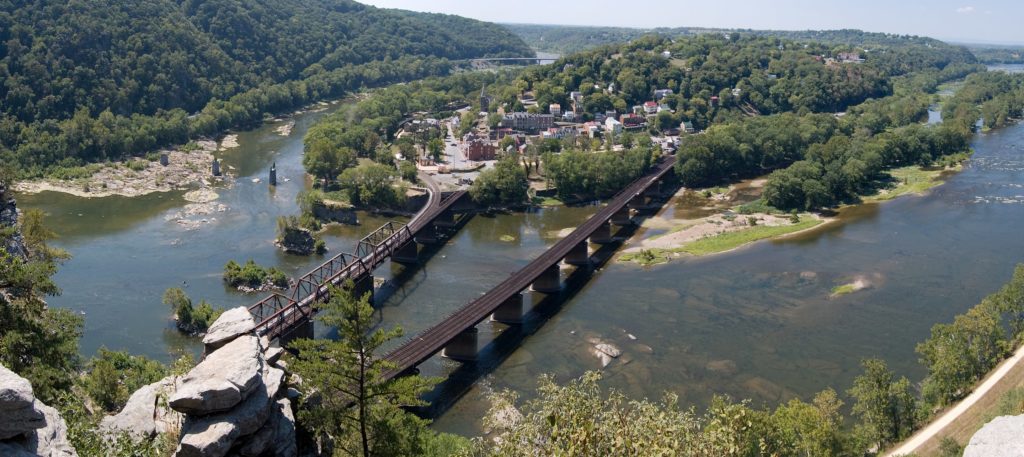
Snuggled between the steep crags of the Blue Ridge, at the point where the Shenandoah River meets the Potomac, Harpers Ferry is a quiet mountain village of stone-and-brick buildings and narrow, hilly streets. Its history, though, is anything but quiet, for it was here in 1859 that fiery abolitionist John Brown launched his ill-fated raid on the U.S. armory and arsenal. Though he ended up being hanged for the act a couple of months later, his actions helped precipitate the Civil War. Here, too, several skirmishes and battles unfolded during the Civil War.
Today the heart of the town has been made part of the National Park System, and old buildings contain interesting small museums on Harpers Ferry’s history. It’s a beautiful place to visit, with spectacular scenery, cozy inns and restaurants, and fabulous hiking (including the Appalachian Trail) to accompany your foray into Civil War history. These are the must-see Civil War sites, most of which are located within the Harpers Ferry National Historical Park.
Virginius Island
What to see today: Most of the brick-and-stone buildings on Virginius Island have been swallowed by floods, and only ruins survive. Regardless, the NPS has erected a variety of plaques along a meandering path that pinpoint the vine-choked remains of important buildings and flesh out historical details.
John Brown’s Fort
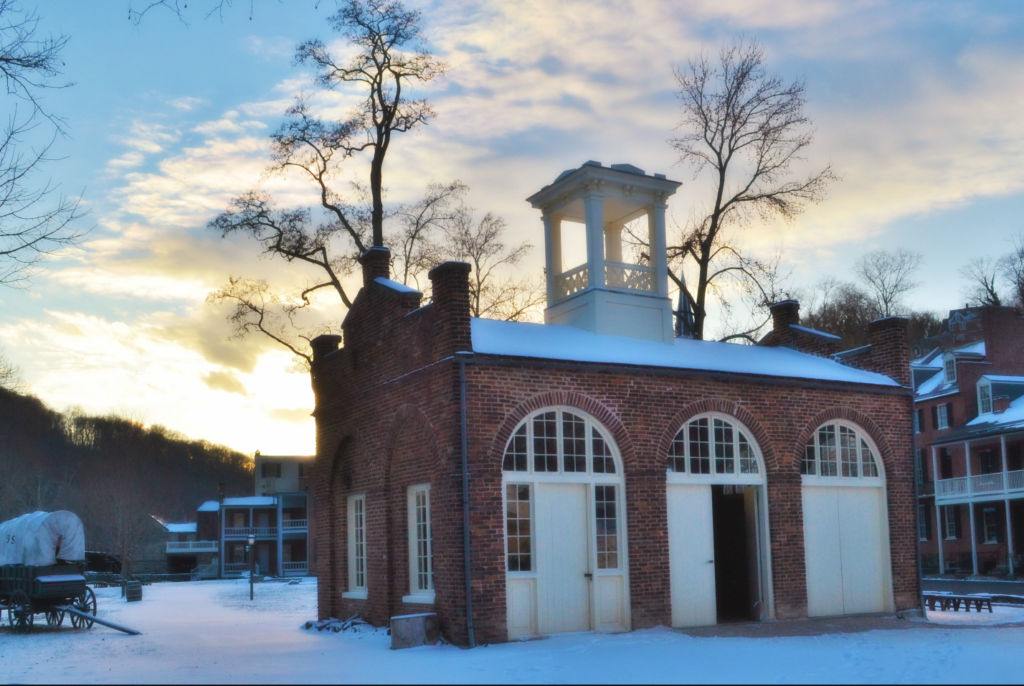
In 1859, abolitionist John Brown was determined to obtain weapons to lead an armed revolt in Virginia. On October 16, he and his followers captured the arsenal in Harpers Ferry, but then were thwarted by a company of 90 Marines led by Robert E. Lee and J.E.B. Stuart. After barricading themselves in the armory’s fire engine and guardhouse, located in Harpers Ferry’s Lower Town, they were captured. Several weeks later, Brown was convicted of treason and hanged. His last words were: “I, John Brown, am now quite certain that the crimes of this guilty land will never be purged away but with blood.” The Civil War began less than two years later on April 12, 1861.
What to see today: The reconstructed fort, located in the Lower Town, is part of the Harpers Ferry National Historic Park, accessible through a park ranger tour.
Lower Town

Along Shenandoah Street in Harpers Ferry’s Lower Town, interpretive markers and small museums in old buildings tell the many different angles of Harpers Ferry’s story. Rangers often lead programs on various aspects of the town’s history.
What to see today: Start at the information center along Shenandoah Street. Nearby, you’ll find several different museums occupying the historic buildings. The Restoration Museum, across the street, explores the town’s different layers of history and demonstrates how a building changes over time. The Industry Museum showcases transportation improvements and industrial innovations that gave rise to Harpers Ferry. A video at Harpers Ferry: A Place in Time explores the town’s growth from past to present. Mrs. Stipes Boarding House is the boarding house of Cornelia Stipes during the Civil War; war correspondent James Taylor occupied rooms on the second floor. The John Brown Museum details the life of the abolitionist with displays, short videos, maps, photos, and artifacts. This is a great one-stop for a John Brown overview. On the second floor of the John Brown Museum, the Allies for Freedom Museum shares the stories of five African-American raiders who joined John Brown.
The Point

The Point is the spot where the Potomac and Shenandoah Rivers converge, cutting through the Blue Ridge. Leading up to the Civil War, the Point was a bustling business center, with a saloon, hotel, restaurant, and other shops and businesses. Here, too, spanned the B&O Railroad viaduct across the Potomac River, completed in 1836. On June 14, 1861, Confederate troops blew up the bridge. Throughout the war, the bridge was destroyed and replaced nine times.
On February 7, 1862, Union troops burned the Point’s buildings to prevent Confederate sharpshooters from using them for cover.
What to see today: Standing at the Point, just beyond John Brown’s fort, you’ll take in three states: Maryland, Virginia, and West Virginia, at the beautiful confluence of the Shenandoah and Potomac Rivers. Interpretive signs detail the history.
The Lockwood House
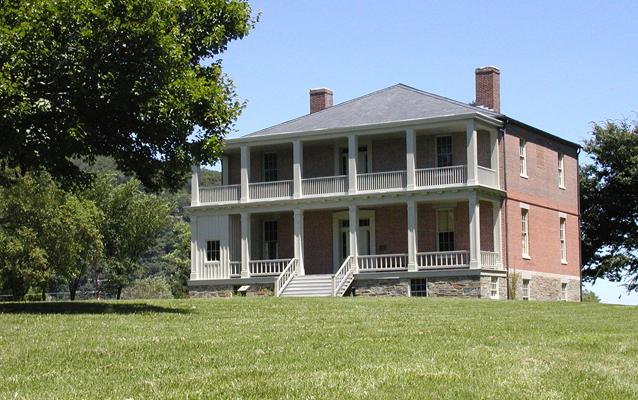
The stone-and-brick Lockwood House was built in 1848 for the paymaster at the Harpers Ferry Armory. During the Battle of Harpers Ferry, wounded Union soldiers were cared for at the Lockwood House, referred to then as Clayton Hospital. Later, army officers of both sides occupied it, including Union Gen. Henry Lockwood, who headquartered here for three months in 1864. When not being used as a hospital or headquarters, the house served as a bivouac, a prison, and a ballroom. In November 1863 a festive Thanksgiving ball, featuring the brass band of the 34th Massachusetts Infantry, took place under the candlelit chandelier made of rifle barrels and bayonets.
What to see today: The house is located on the east side of Camp Hill at 360 Fillmore Street. It currently remains vacant, with the basement housing the National Historical Park’s curatorial collection.
Loudoun Heights
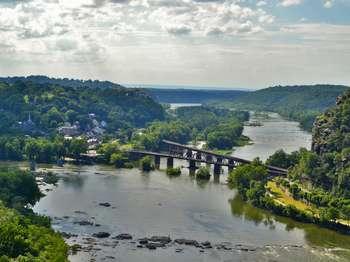
Col. Thomas Jonathan “Stonewall” Jackson led his Confederate forces to gain control of Loudoun Heights, the second tallest mountain overlooking Harpers Ferry. In 1861, Jackson ordered that three infantry blockhouses be built on top of the mountain, the remnants of which are still visible today.
What to see today: The Loudoun Heights Trail explores this tree-shaded mountain, wandering past reminders of the past. Keep a lookout for pits and ditches leftover from slow-burning fires that colliers maintained to convert local timber into charcoal to fuel the furnaces and forges at the Harpers Ferry armory. During the Civil War, Confederate soldiers trampled up the mountain, bringing supplies to the summit. You can still see the crumbling remains of stone infantry fortifications.
Maryland Heights

A 300-foot vertical cliff, Maryland Heights offers dazzling views over Harpers Ferry, the Potomac River, the Baltimore & Ohio Railroad, and the Chesapeake & Ohio Canal. During the Civil War, it played a role at least three different times. During the Battle of Harpers Ferry, it hosted the first battle on Northern soil between Union and Confederate troops. Robert E. Lee was determined to capture the Union garrison located atop the mountain, with battle breaking out between 6:30 a.m. and 3:30 p.m. on September 13, 1862. The Federals eventually abandoned the position, and their loss of the heights cut off Federal escape routes, helping precipitate the surrender of the U.S. garrison on September 15. Second, just after the Battle of Antietam, the Federals took back the mountain, protecting their position with the construction of the Interior Fort, the Exterior Fort, and the 100-pounder Battery. And then, in the Confederate’s third and final invasion of the North in 1864, Maj. Gen. Jubal Early failed in his attempt to rout the Federals out of the forts; the Federals spent the time sending for reinforcements from Washington, thereby helping to save the U.S. capital.
What to see: One of the region’s most popular hiking trails, the Maryland Heights Trail winds up the mountain, offering tidbits of historical facts intertwined with spectacular views looking over toylike Harpers Ferry.
Bolivar Heights
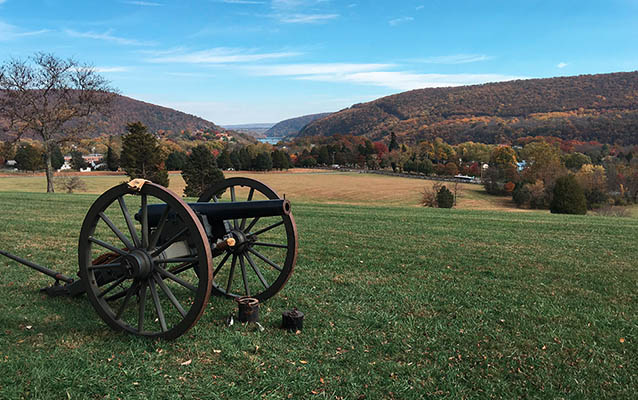
Bolivar Heights, a plateau overlooking Harpers Ferry, hosted several minor Civil War incidents. In October 1861, a minor skirmish erupted between 500 Virginia militiamen and 600 Union regulars, with no decisive victory for either side. On May 30, 1862, Southern hero Stonewall Jackson used the heights to bombard Harpers Ferry during his Shenandoah Valley Campaign. Then, on September 12–15, 1862, Stonewall Jackson led his troops here in the capture of 12,500 Union troops—the largest single capture in the Civil War. And then, during Confederate Gen. Robert E. Lee’s advance toward Gettysburg in June 1863, the heights were blasted from Maryland Heights, damaging civilian homes in the process.
What to see today: The easy, 0.7-mile Bolivar Heights Trail, with old black cannon and interpretive plaques to fuel your imagination, wanders past the sites where soldiers camped out in pitched tents and practiced military maneuvers. The words of soldiers are etched on signboards describing the days of battle. Wrote one Federal soldier: “The hissing and screeching of shot and shell discharged at us ’twas a strange medley for a Sabbath’s day’s worship.”
TRAVEL NOTES
How to Get Here: Harpers Ferry is easily accessible by car. It’s about 70 miles north of Washington, D.C., and 70 miles east of Baltimore.
Visitor Centers: There are two visitor centers in Harpers Ferry National Historical Park. The main visitor center is located on Cavalier Heights, several miles outside town. This is a good place to park your car and take the shuttle into town—saving you the headache of trying to find parking in Harpers Ferry proper. The buses run continually. The Lower Town information center is where most ranger-led tours begin; it also includes staff and exhibits.
Where to Stay: Head to Ledge House Bed & Breakfast for a nature escape in the heart of town; its balconies and decks overlook the Potomac and Shenandoah Rivers. Just up the road, the Light Horse Inn occupies a historic house with early American flair.
Where to Eat: Hamilton’s Tavern 1840 is popular for its globally inspired craft cuisine like salmon tartare, fish tacos, and butternut squash risotto. For breakfast, Battle Grounds Bakery & Coffee has delicious breakfast sandwiches, fresh pastries, and what many say is the best coffee around.
Additional Information: Contact the Harpers Ferry National Historical Park.

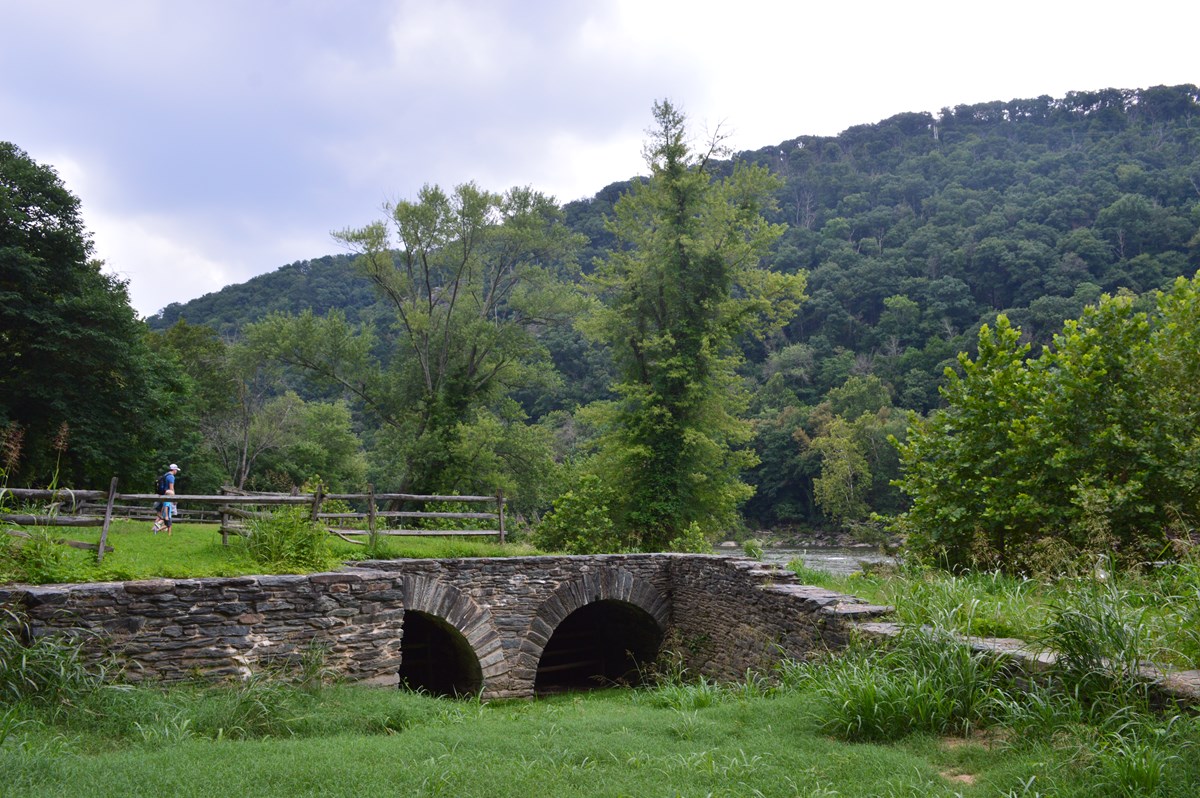
You must be logged in to post a comment.